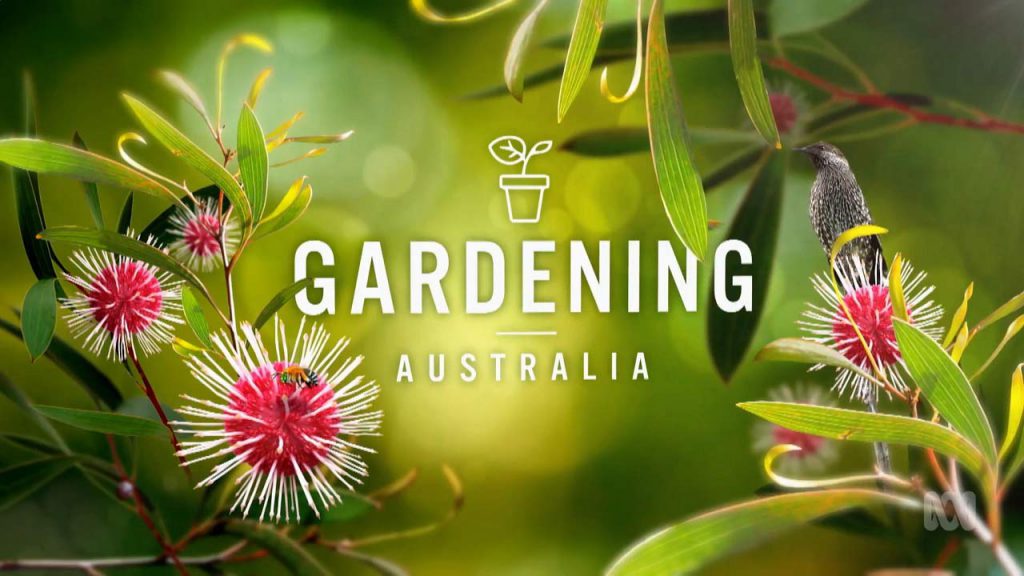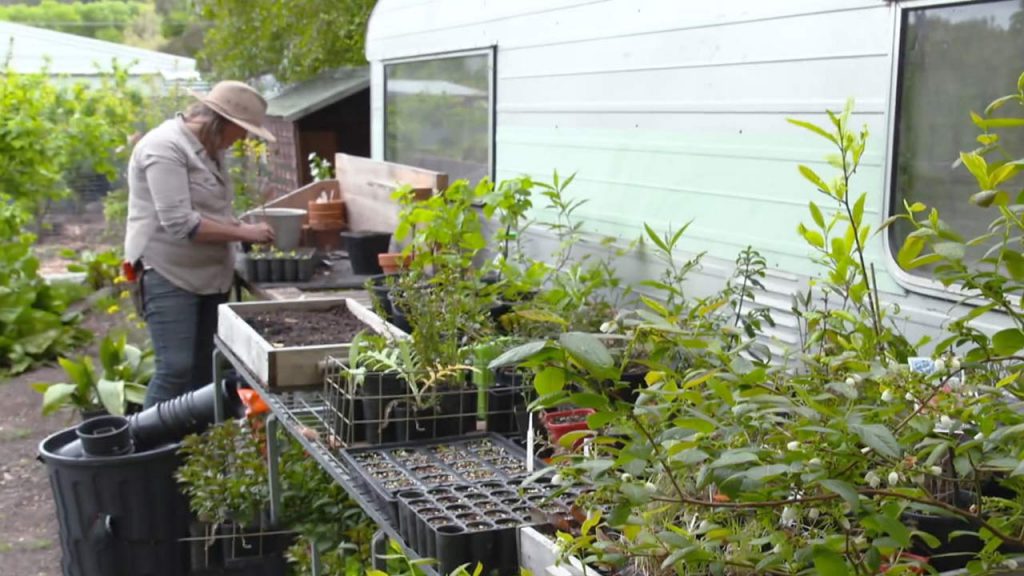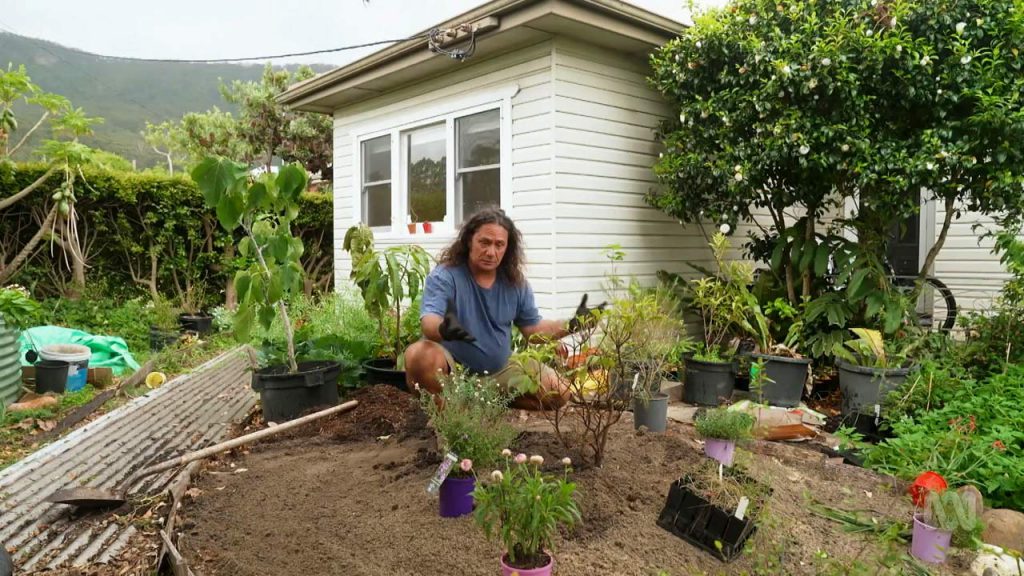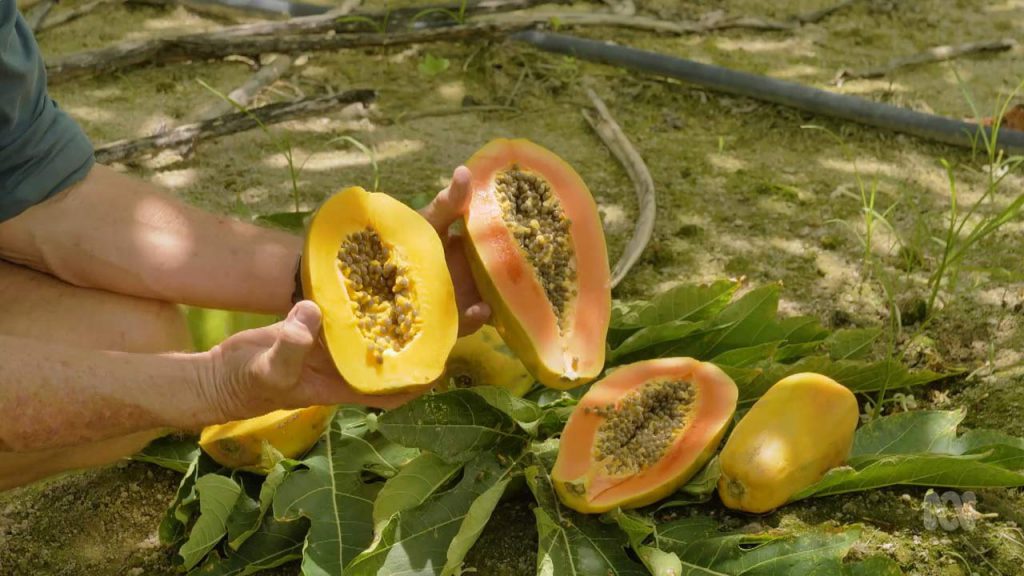Gardening Australia episode 27 2022: Costa walks a trail for mental health; Jane meets a gardener planting for animals; Tino visits a tomato sale; Jerry learns to pot up lycophytes; Millie finds a peaceful home garden; we meet a rare plant-collecting family.
Inspiring, entertaining and full of practical advice, join Costa Georgiadis and the team as they unearth gardening ideas, meet avid gardeners and look at some of the most inspiring gardens from across the country.
Gardening Australia episode 27 2022
Steps to Relax
Costa walks a trail that ties together ecological and mental health to learn about the benefits of nature for wellbeing. Whilst going for a walk through urban green spaces or even a hike in the bush is a great thing to do, when we take time to stop and really pay attention to nature it can have a lot of added benefits for our mood and wellbeing.
To help more people do this in their everyday lives, Waminda Parker, Director of The Connective, has set up a series of trails with her team and in collaboration with councils, across parks, hospitals, universities, and botanic gardens in NSW. They are called NatureFix and are designed to help users go slow and engage with their senses. The trails have several activities along the way tailored to the particular location, that are each backed by scientific evidence for health and wellbeing benefits.
Garden for Visitors – Gardening Australia episode 27 2022
Jane tours the home garden of an environmentalist with beautiful plantings designed to provide food and habitat for native animals. Jane meets with naturalist, Neal Masters, who has carefully designed his own native garden to extend its boundaries to include creatures from the local creek.
The Darebin Creek Parklands in Melbourne’s north are home to over 100 bird species alone, as well as reptiles, fish, frogs and other wildlife. This urban bushland is remnant Volcanic Plains grassland and a critically endangered site. Environmentalist Neal Masters, whose previous work focused on preserving vegetation in Victoria’s railways reserves, has made sure this special pocket of habitat has been extended across to his home garden.
Neal’s garden was built predominantly for butterflies and small birds. “I did a lot of research to find out which plants would attract specific types of animals that I wanted in the garden.” The front garden includes Westringia ‘Violet Skies’ to attract native bees and butterflies, Correa ‘Bisheno Bells’ to attract honeyeaters such as the Eastern Spinebill. Chrysocephalum is a host plant for the Painted Lady Butterfly, and Scaevola is the host plant for the Meadow Argus butterfly.
Sheet Mulching
Sophie shows how to sheet mulch to get rid of weeds and create new garden beds. Sheet mulching is a useful technique for getting rid of weeds in large areas of your garden. It’s cheap, effective and is a way to kill weeds without using herbicides. Using newspaper or cardboard as a layer underneath mulch will smother the weeds by denying them sunlight so that they rot away.
Sophie uses this method extensively throughout her garden and has fine-tuned the process.
Tomato Trade – Gardening Australia episode 27 2022
Tino visits the Royal Tasmanian Botanical Gardens to explore the 120 different varieties of unique tomatoes cultivated for their annual tomato sale. Every year in October the Royal Tasmanian Botanical Gardens holds a huge tomato sale that includes old favourites and new cultivars for home gardeners to experiment with – it’s a tomato lover’s dream!
Thousands of seedlings are lovingly grown and cared for by Horticulturist Margot White and a team of enthusiastic volunteers. For the 2021 sale they selected 120 different cultivars with a particular focus on those that suit Tasmania’s climate and have new or interesting traits, such as improved disease resistance, unique flavours and versatility in the garden and the kitchen.
Margot says seeds are sourced from “around the world. We’ve got some from the University of California Davis campus in their tomato genetic research centre, and some of them haven’t been seen in Australia before.”
Cucurbit Cross-pollination
Josh discusses cross pollination of cucurbits and gives tips on how to prevent it. Cucurbits are a great group of crops to grow in summer, classified as plants within the genus Cucurbita within the family Cucurbitaceae. This delicious group includes cucumbers, zucchini, melons, pumpkins, and squash. Many gardeners will want to grow several different cucurbits at the same time, which is perfectly alright for the first generation of fruit, however complications arise when it comes to saving the seed.
As these plants are all within the same genus, they readily cross-pollinate between varieties. This will not be apparent in the fruit you harvest immediately, but the fruit grown from the second generation of seed may have bizarre and undesirable traits if of mixed parentage. For example, a cross between a cucumber and a pumpkin plant may result in inedible fruit.
Dry Carbon
Hannah shows how she keeps carbon levels up in the compost. Green waste like kitchen scraps and grass clippings are often in abundance for adding to the compost. But to compost like a pro you need to add in the right amount of brown waste, the carbon element, to balance out the nitrogen and water content so you don’t end up with sludge.
Hannah keeps a second dry ‘carbon waste’ bin right next her compost that gets filled with things like newspaper, cardboard, twigs, sawdust, autumn leaves and straw as soon as it comes on hand rather than having to scrounge for it around the garden. Shred or tear up paper materials before you put them in to reduce double handling even further. Then you can simply grab carbon materials to add in with the greens every time, making the process neat and efficient.




